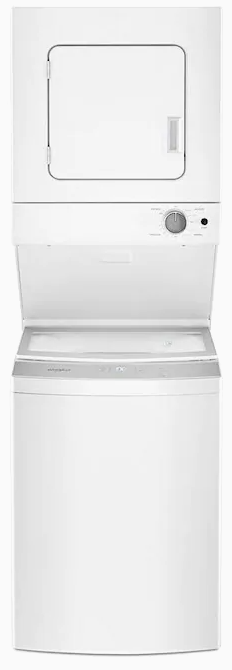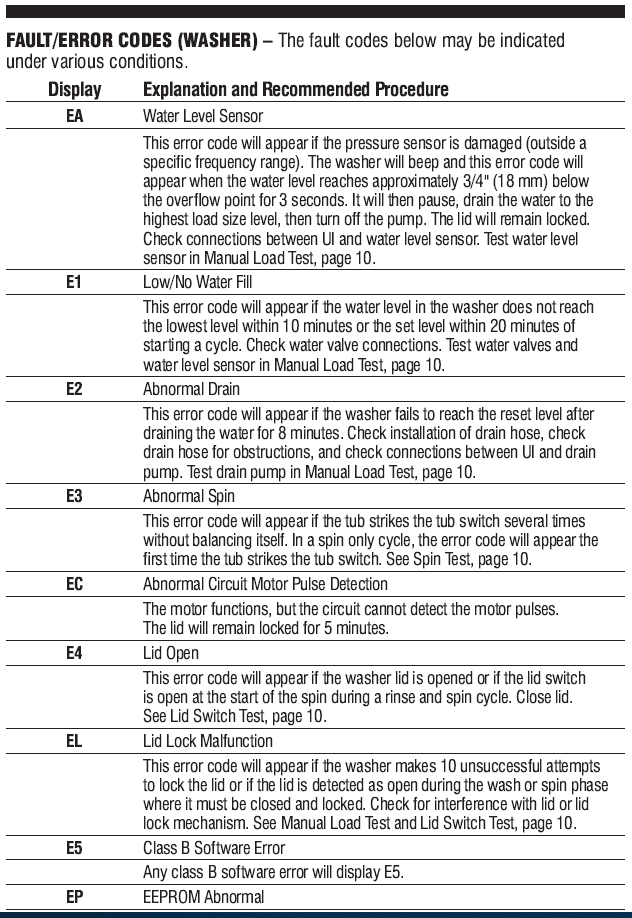 Perhaps you haven’t looked lately, but Whirlpool finally got it together and did a good job recreating the old standby washer/dryer combo. That’s not to say they don’t have problems, because they do, but not like before.
Perhaps you haven’t looked lately, but Whirlpool finally got it together and did a good job recreating the old standby washer/dryer combo. That’s not to say they don’t have problems, because they do, but not like before.
I remember when the laundry centers seemed to have been designed by someone uneducated in washer design. Many of them had terrible design flaws that made them shake so bad people returned them in droves.
Imagine the feeling of having your new house flood during the first use of the machine, and having no way to stop the tub from completely draining onto your new floor in your upstairs laundry room.
Fortunately, those days are mostly behind us now. Designs are much better, and built-in safety features and diagnostics do a good job detecting problems before they turn into unmitigated disasters.
A New Digital Display User Interface
You may remember when these machines never had a display or self-diagnostics. They were a hassle to operate because they used old-style switches that broke often, and because other, non-stacked models already had the latest features like digital consoles and displays. So, owning one of the older units made using one seem outdated and unreliable, which they were.
Technology to the rescue! Whirlpool’s design changes included fitting this machine with the new style washing system found in most late-model machines. That means better dependability and more familiarity with the internal parts.
Like I said earlier, the addition of self-diagnostics made a positive change in the right direction. Problems that inevitably occur aren’t as bad as before, and not as often.
Self-Diagnostics and Error Codes
Below is a list of the error codes for this machine. I’ll look at a few of the more common ones in detail. The list is another indicator of the advancements made in this model. Earlier versions had no diagnostics and inadequate service information. We can feel confident in owning and working on these machines.

Abnormal Spin Error – One of the problems that the redesign resolved is the E3 Error Code for an abnormal spin. Whirlpool added an out-of-balance switch that trips the code whenever the tub makes contact. That’s going to happen with an unbalanced load or an overweight one.
That’s key to this problem. Many people think just because the load isn’t so big that it’s falling out of the tub, it’s OK to run a wash. What they’re not addressing is the weight of the load. Sometimes loads will look normal, but are too far over the weight limit for this machine. That said, simple physics tells us that the tub will quickly go out of balance as the inertia increases with spin speed. With this condition, expect the out-of-balance switch to get a lot of exercise.
This situation brings me back to my age-old sermon about balanced loads in top-load washers. Always keep your loads sized, so they never fill the basket more than halfway unless, and only when, the load is very lightweight. You can then make common-sense adjustments to increase the load size while keeping the weight in mind, too.
Lid Lock Malfunction – Another error code, EL for a failed lid lock, sometimes shows up for no apparent reason. Do yourself a favor and find out why before ignoring it altogether. That’s because it will come back, and it will happen at the worst possible time. The lid won’t unlock when you have your best clothes in the washer, and you have to work that day. So, if it comes up, find out why it happened if you can.
Look for something stuck under the lid, blocking the plunger of the lid lock. Or, if you hear the latch trying to lock, look for an obstruction other than under the lid. It might be that the latch has failed, too.
Don’t Push the Machine Past Its Limits
Like I said earlier, these machines have greatly improved. But, they are machines, and they break. Not often, we hope. So, don’t push your luck and try to sneak in the extra towel, shirt, or pants. The little excess weight might be the final straw, if you know what I mean.
Keep the loads reasonable, and follow the “halfway” rule. That will save you tons of money down the road in fewer repairs, especially from overloading. I hope this edition of the DIY Appliance Repair Series helps you someday. It’s always a pleasure writing for our readers because I know all of you appreciate the help.
As always, if you have any comments or suggestions, please feel free to include them below. We love hearing from you!
Need Some More Help?
Book an appointment with one of our expert technicians today.

5 Comments
Add comment Cancel reply
This site uses Akismet to reduce spam. Learn how your comment data is processed.

I recently broke my timer knob and I have no idea how to remove the panel to repair myself. I removed all the visual screws that were connected to the panel. I even used a putty knife and a fathead to try to access a possible clamp. None of these attempts worked. I don’t want to break the panel because it is plastic.
Please help!
Thank you,
Julius
Hey Julius, I think I might know what model you’re referring to but I can be sure until you tell us. Or, go here and allow us to help you troubleshoot. Thanks!
Hi,
Our WET4024HW0 Whirlpool Laundry Center has started to give us an EL sign after it has mostly filled the drum with water. We have checked for any obstructions in the lid or spot where it latches but cannot find anything. Once we unplug and turn back on the machine it will finish the cycle with no issues, until the next load. What could be causing the issue if there is no obstructions?
Thanks
This unit was installed in my house when I bought it. The water it uses seems very counterintuitive.
My smallest loads, dish towels usually, are maybe only 1/8 of the capacity of the washer but, it fills it up nearly to the top with water, to the point where it can splash over.
My largest loads are typically just cloths washed on normal, filled to about half. It will only fill the drum up less than halfway with water on these. There is so little water being added that the clothes end in the same place they started and do not get very clean unless I add an extra 1-2 gallons of water after it is filled.
Is there some malfunction that is not being caught by the sensors?
Hi Josh, that sounds like you might have an issue with the pressure switch (water level sensor). But to be sure, you can do a manual load test on the machine. The description and steps are in the tech sheet provided with your machine. There is a shipping label envelope attached to the back of the unit containing the tech sheet, wiring diagram, care and use guide, and other information. With some time and patience, you will find the cause. If you get stumped, please feel free to set up an appointment with us. Go here: https://nelihome.com/book-an-appointment. Good luck, Josh.
Thomas @ Neli